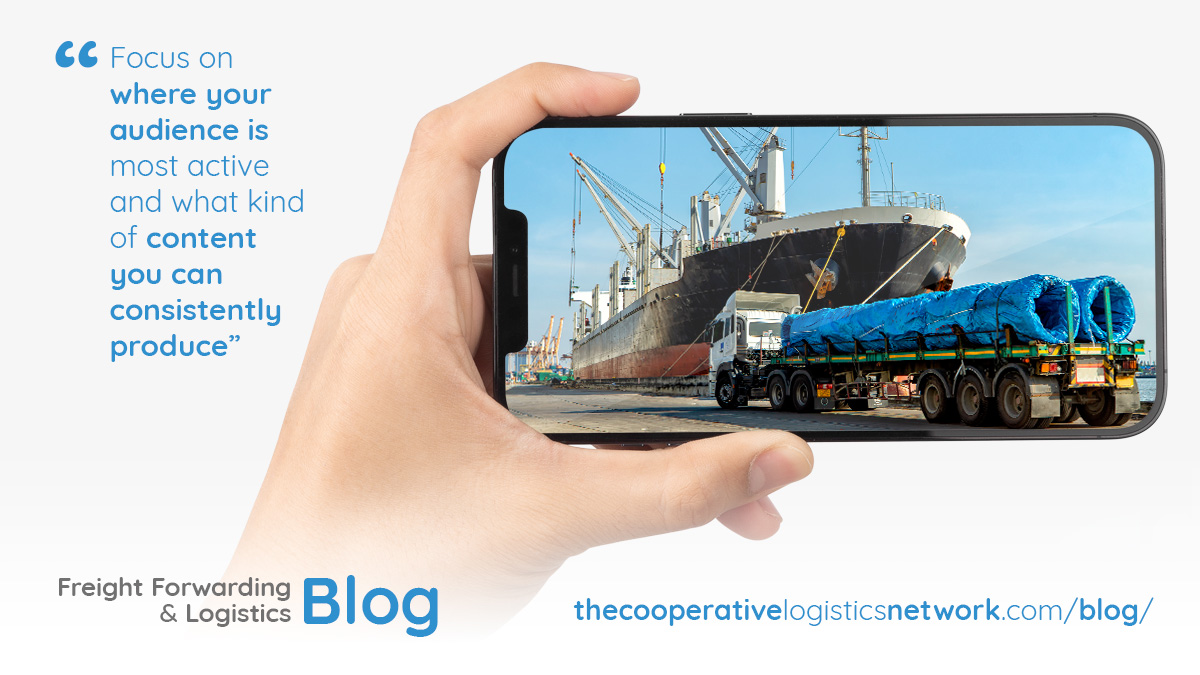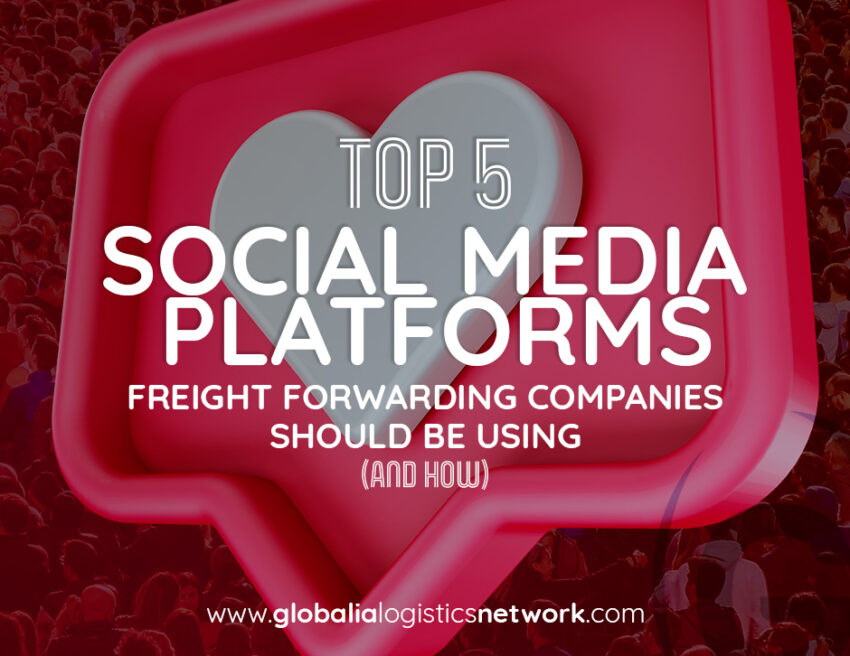In today’s digital-first economy, freight forwarding companies are no longer competing solely on operational efficiency—they’re also competing on visibility, credibility, and digital presence. As more clients turn to the internet to vet logistics partners, having a solid social media strategy has become as essential as tracking software or customs expertise.
But not all social media platforms are created equal. Each one offers unique advantages based on your goals—whether you’re generating leads, building partnerships, or showcasing complex logistics projects. Below, we dive into the top five platforms freight forwarders should be using and, more importantly, how to use them effectively.

LinkedIn: The professional powerhouse
When it comes to B2B marketing, LinkedIn is hands down the most powerful tool in a freight forwarder’s digital arsenal. Unlike other platforms, LinkedIn is purpose-built for professional networking, industry knowledge-sharing, and lead generation.
Freight forwarding companies can use LinkedIn to connect with potential clients, network with logistics providers worldwide, and engage with shipping lines, port authorities, and customs brokers. Sharing industry insights, company news, case studies, and thought leadership posts builds authority and keeps your brand top-of-mind.
One key advantage of LinkedIn is its ability to humanize your business. By encouraging your team to share company updates or behind-the-scenes content, you multiply your reach while boosting employee engagement. Tools like LinkedIn Articles and Newsletters can also position your team as industry thought leaders.
Facebook: Community, culture, and customer engagement
While Facebook may seem more casual compared to LinkedIn, it remains a powerful platform—especially for building community and showcasing company culture. With over 2 billion active users, it offers massive reach and an opportunity to connect with clients in a more conversational tone.
Freight forwarding companies can use Facebook to post updates on deliveries, office events, port visits, and even birthdays and team achievements. These types of posts help humanize your brand and build long-term relationships with customers, agents, and partners. It’s also a great platform for client testimonials, real-time updates during trade shows, or company milestones.
Another major plus is Facebook’s advertising engine. With its targeting capabilities, you can run highly specific ad campaigns—perhaps aimed at local exporters, regional manufacturers, or customs agents—to promote your services or even job openings.
Instagram: Turning logistics into visual stories
You might not associate freight forwarding with glossy images and short videos, but Instagram is the perfect platform for making logistics visually compelling. Every day, your team coordinates shipments across ports, borders, and skies—there’s real storytelling potential in that.
Instagram is ideal for showcasing project cargo, time-lapse loading operations, port visits, and office celebrations. Freight forwarding companies that handle unique or oversized shipments can really shine here—just think of how eye-catching a 100-ton turbine being loaded onto a vessel can be on a mobile screen.
Reels and stories allow for short, engaging content that can reach thousands organically. Hashtags like #freightforwarding, #logisticslife, or #cargoonthemove also help widen your visibility in industry-specific niches. And by tagging clients or ports you work with, you increase your exposure to their audience as well.
X (Formerly Twitter): Real-time industry engagement
Though it’s evolved in purpose, X (formerly Twitter) remains a valuable platform for real-time engagement with industry trends, breaking news, and logistics updates. It’s the best place to quickly comment on developments like shipping delays, port congestion, or policy changes in trade.
Freight forwarding companies can follow ports, customs agencies, international trade organizations, and supply chain influencers to stay in the loop—and be part of the conversation. Tweeting short updates, linking to blogs, or sharing media coverage of your company can position you as a responsive and knowledgeable industry player.
Twitter’s character limit forces brevity, making it ideal for forwarding companies that want to keep clients updated without overloading them with information. Participation in relevant hashtags and logistics-related Twitter chats can also help grow your network organically.
YouTube: The logistics content powerhouse
Last but definitely not least, YouTube is a long-form content platform that can dramatically boost your SEO and brand awareness. It’s where you can truly showcase the complexity, scale, and success of your logistics operations.
Freight forwarding companies can use YouTube to create video case studies, warehouse tours, customer testimonials, explainer videos about the forwarding process, and tutorials on customs documentation. YouTube content not only engages visually but also ranks highly in Google search—giving your company lasting visibility.
Another advantage is its use in sales pitches. Embedding a professional video about your services into an email or proposal adds credibility and professionalism. And because YouTube videos can be shared across LinkedIn, Facebook, and your website, it’s a valuable asset that multiplies your content ROI.
Choosing the right mix for your social media strategy
Each platform serves a unique role, so freight forwarding companies don’t need to be everywhere at once. Instead, focus on where your audience is most active and what kind of content you can consistently produce. LinkedIn is essential for B2B branding and lead generation, while Facebook and Instagram are great for engagement and culture. Twitter is your go-to for real-time interaction, and YouTube is where your brand becomes a story worth watching.
By strategically using a mix of platforms and tailoring your content for each one, your freight forwarding business can gain visibility, build credibility, and ultimately win more business in a competitive global market.
Investing in social media isn’t just about likes and follows—it’s about building relationships, reinforcing your brand, and staying ahead of competitors who still rely solely on cold calls and trade fairs. In a logistics world that’s going digital, it’s time to put your company in the spotlight.


